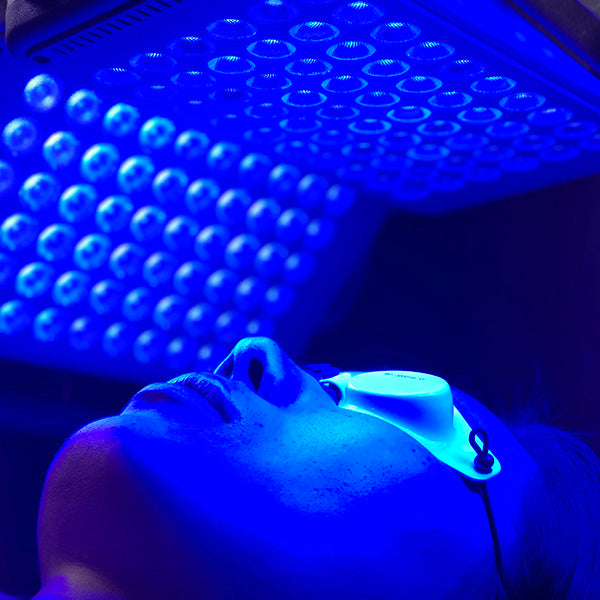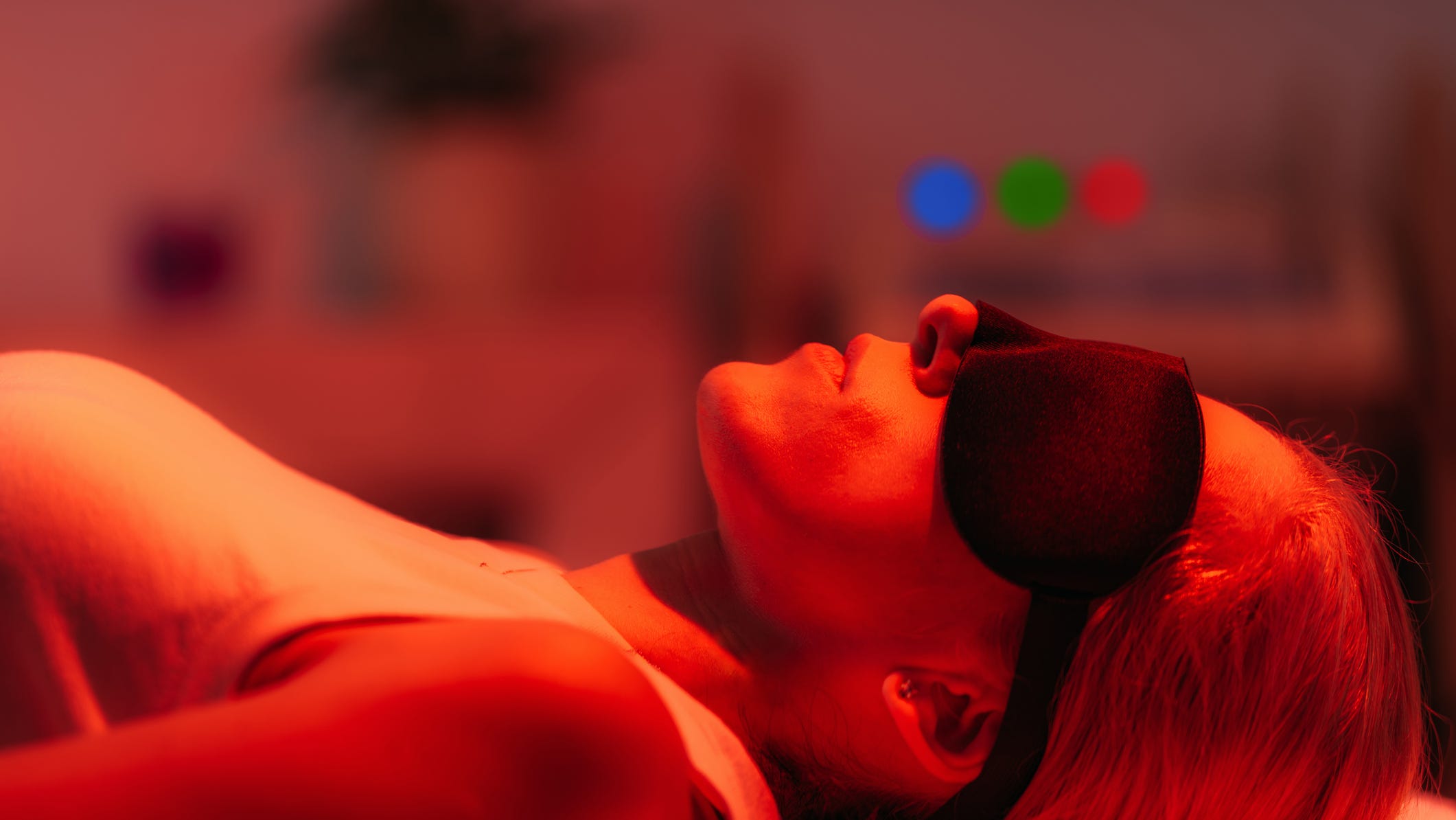The Scientific research Behind Photobiomodulation: Illuminating Therapeutic Pathways
Wiki Article
Unlocking the Prospective of Photobiomodulation: A Promising Strategy for Therapeutic Intervention
Are you curious regarding the possibility of photobiomodulation for healing intervention? Imagine a situation where an individual experiencing chronic pain discovers relief with a non-invasive treatment that utilizes light. This is exactly what photobiomodulation deals. It is an appealing technique that harnesses the power of light to boost healing and lower inflammation in different clinical problems. By targeting particular cellular processes, photobiomodulation has revealed potential in accelerating injury healing, decreasing discomfort, and advertising cells regrowth. In this intro, we will certainly discover the systems of action, applications in medicine, and the present evidence supporting the effectiveness of photobiomodulation. Additionally, we will certainly review future directions and potential challenges in unlocking its full capacity as a therapeutic intervention.Understanding Photobiomodulation
To recognize photobiomodulation, you need to grasp the principle of how light therapy can directly impact cellular procedures in your body. Photobiomodulation, likewise recognized as low-level light therapy, is a non-invasive therapy that uses particular wavelengths of light to boost biochemical reactions in your cells. When revealed to these light wavelengths, your cells take in the power and convert it into cellular power, called adenosine triphosphate (ATP) This increase in ATP production brings about a cascade of cellular actions, consisting of boosted metabolism, improved flow, and raised production of collagen and various other proteins.The therapeutic results of photobiomodulation are far-reaching and have been examined extensively in numerous clinical fields. It has revealed promising lead to advertising cells repair work and regeneration, reducing swelling, relieving discomfort, and enhancing wound recovery. Photobiomodulation has been found to have a favorable impact on neurological conditions, such as stressful brain injury and stroke, by boosting neural activity and advertising neuroplasticity.
Among the essential advantages of photobiomodulation is its security account. Unlike other treatments, photobiomodulation does not generate any kind of heat or cause cells damages. It is a non-invasive and pain-free treatment that can be carried out in a scientific setup and even in the convenience of your very own home with making use of mobile tools. However, it is very important to note that photobiomodulation should be provided by experienced specialists or according to the supplier's guidelines to make sure optimum results and security.

Devices of Activity
In comprehending the mechanisms of activity, you will discover how photobiomodulation straight influences cellular procedures through particular biochemical reactions. When light is put on the body, it is absorbed by chromophores, such as cytochrome c oxidase and flavins, which exist in the mitochondria. This absorption causes a cascade of occasions that eventually lead to cellular adjustments.Photobiomodulation enhances the task of cytochrome c oxidase, a critical enzyme in the mitochondria that is included in the electron transportation chain. As an outcome, mobile metabolic rate is boosted, advertising cells repair and regrowth.
In addition, photobiomodulation has been shown to regulate mobile signaling pathways. It activates numerous development elements and signaling molecules, such as nitric oxide and reactive oxygen species, which play important roles in processes like angiogenesis, cell, and swelling spreading. These signaling paths contribute to the healing impacts of photobiomodulation, advertising cells recovery and minimizing pain and swelling.
Applications in Medication
Explore the considerable applications of photobiomodulation in medication. Photobiomodulation, additionally referred to as low-level light treatment, is a non-invasive therapy that makes use of light to advertise and stimulate cellular processes healing. In medicine, this method has actually revealed encouraging outcomes throughout numerous fields.One of the key applications of photobiomodulation is in pain monitoring. pbm therapy. It has actually been utilized to minimize both intense and persistent discomfort, consisting of bone and joint problems, neuropathic discomfort, and post-operative discomfort. By targeting the afflicted area with details wavelengths of light, photobiomodulation can minimize swelling, advertise cells fixing, and offer alleviation
Furthermore, photobiomodulation has actually shown prospective in injury recovery. It can speed up the recovery procedure by improving cell expansion, advertising angiogenesis, and minimizing mark cells formation. This has substantial implications in the treatment of chronic injuries, such as diabetic person abscess and pressure sores.
In dermatology, photobiomodulation has actually been made use of for its regenerative and anti-inflammatory results. It can enhance the look of marks, lower acne sores, and stimulate hair growth in conditions like original site androgenetic alopecia.
In addition, photobiomodulation has actually shown promise in neurorehabilitation. It can boost cognitive feature, improve electric motor healing, and aid in the treatment of neurodegenerative illness like Alzheimer's and Parkinson's.
Professional Proof and Research Study Findings

In the area of musculoskeletal conditions, photobiomodulation has actually been found to minimize pain and inflammation, boost range of movement, and increase tissue repair. Research studies have actually demonstrated its effectiveness in dealing with problems such as osteoarthritis, tendinopathies, and muscle mass pressures. Additionally, photobiomodulation has actually revealed positive impacts on injury recovery by promoting collagen fibroblast, angiogenesis, and synthesis proliferation. This makes it an useful device in the monitoring of chronic injuries, diabetic person abscess, and medical incisions.
In addition, study has actually revealed that photobiomodulation can have neuroregenerative and neuroprotective impacts. It has been found to improve cognitive function, decrease neuroinflammation, and enhance neuronal survival and synaptic plasticity. This has important implications for the therapy of neurological problems such as Alzheimer's illness, Parkinson's illness, and stroke.
Future Directions and Potential Obstacles
Progressing, it is essential to take into consideration the future instructions and prospective challenges surrounding the usage of photobiomodulation as a healing intervention. One crucial future direction is the exploration and optimization of application specifications. Currently, there is no agreement on the ideal wavelength, intensity, period, and frequency of photobiomodulation therapy. Additional research study is needed to comprehend the dose-response relationship and develop evidence-based standards for clinical technique.One more important future direction is the advancement of portable and cost-efficient photobiomodulation devices. While current devices work, they are frequently cumbersome, expensive, and require expert guidance - photobiomodulation therapy. The growth of inexpensive and easy to use tools would significantly boost accessibility to this therapy, permitting even more individuals to take advantage of its potential restorative results
Additionally, future research study must concentrate on elucidating the systems underlying photobiomodulation. Regardless of its growing popularity, the exact systems whereby photobiomodulation you can try here applies its healing effects are not fully understood. Comprehending these devices would not just improve our expertise of the treatment yet additionally aid in the development of more targeted and effective interventions.
However, there are additionally possible obstacles that require to be addressed. pbm therapy. These consist of the demand for standard procedures, the demand for properly designed scientific trials with larger sample sizes, and the need for long-term follow-up studies. Furthermore, regulatory and safety and security factors to consider have to be taken into consideration to make sure the secure and reliable usage of photobiomodulation in clinical technique.
Final Thought
In verdict, photobiomodulation holds fantastic pledge as a healing treatment in medicine. With continuous researches and innovations in this field, photobiomodulation has the prospective to open brand-new opportunities for boosting client end results.Are you curious about the capacity of photobiomodulation for restorative treatment? By targeting details mobile procedures, photobiomodulation has shown potential in accelerating wound recovery, reducing pain, and promoting cells regrowth.Additionally, photobiomodulation has shown potential in wound healing.Moving forward, it is important to consider the prospective obstacles and future directions surrounding the use of photobiomodulation as a therapeutic treatment. With recurring researches and innovations in this area, photobiomodulation has the prospective to unlock new possibilities for enhancing patient outcomes.
Report this wiki page